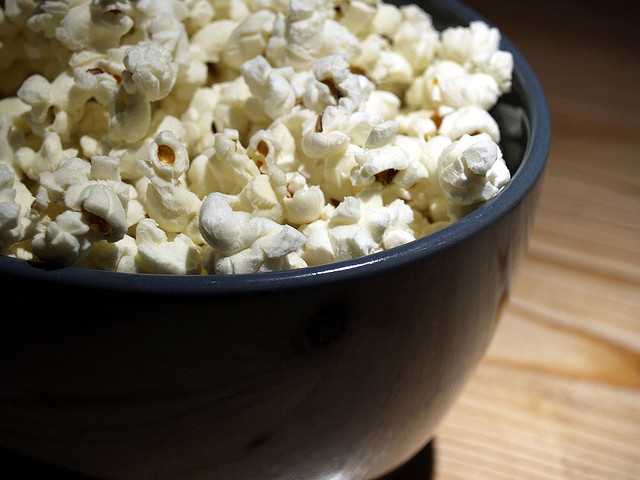
In Mexico City archaeologists have found corn pollen which is 80,000 years old. Researchers believe that our ancestors most likely had popcorn, since this pollen is almost identical as modern popcorn pollen. It is most likely that popcorn grew fist in Mexico, but it was also used in India and China hundreds of years before America was discovered by Columbus. The oldest popcorn ever found is thought to be about 5,000 years old and was discovered in central New Mexico.
Archaeologist have also found ancient kernels of popcorn in tombs in Peru, which are so well preserved that they can still pop. In some cases, conditions can preserve ancient popcorns so well that they still look white and fluffy when the dust is blown off of them. In addition, researchers have found surprisingly fresh-looking popcorn in a cave in southern Utah, which was 1,000 years old. In the ancient Americas popcorn was probably an important part of life.
A corn god was found on a 1,700 years old painted funeral urn in Mexico, wearing a headdress of popcorn. When Columbus came in the West Indies, and when Cortes invaded Mexico, each saw natives eating popcorn, and also using it in headdresses and necklaces. That said, it is clear that Native Americans introduced popcorn to Europeans. During the first Thanksgiving, Native Americans brought a bag of popped corn.
During that period it was common to eat popcorn by holding an oiled ear on a stick over the fire and then chewing the popped kernels off it. Colonist soon began enjoying the first puffed breakfast cereal (a bowl of popcorn served with milk or cream) after learning about this fluffy food. From the late 19th century through the middle of the 20th century, popcorn was very popular in the United States. It was available near theaters, from street vendors, and in parks.
Americans changed their snacking habits during World War II, when sugar was rationed. They began to eat three times as much popcorn as they had before. Americans loved to eat popcorn while watching movies. Their sales dropped for a while when television took off in the 1950s. The United States is not just a land of popcorn lovers but also the land of popcorn, as well. Today, the average American consumes about 70 quarts of popcorn during a year.
Indiana and Nebraska are one of the biggest makers of popcorn in the world. A popcorn kernel is in fact a seed and just like other seeds, inside it has a tiny plant embryo, which is a life form in its earliest stage. The soft, starchy material can be found around the embryo, which would give the embryo energy for growing into a plant. The seed is protected by a hard, glossy shell.
There is some water in this material. The water found inside the kernel turns into steam when the kernel is heated to a high heat (400 degrees F). The steam’s pressure causes the kernel to explode. The soft starch inside turns the kernel inside out by bursting out at about 40 times its original size. The result is the fluffy white area of a popped kernel.



